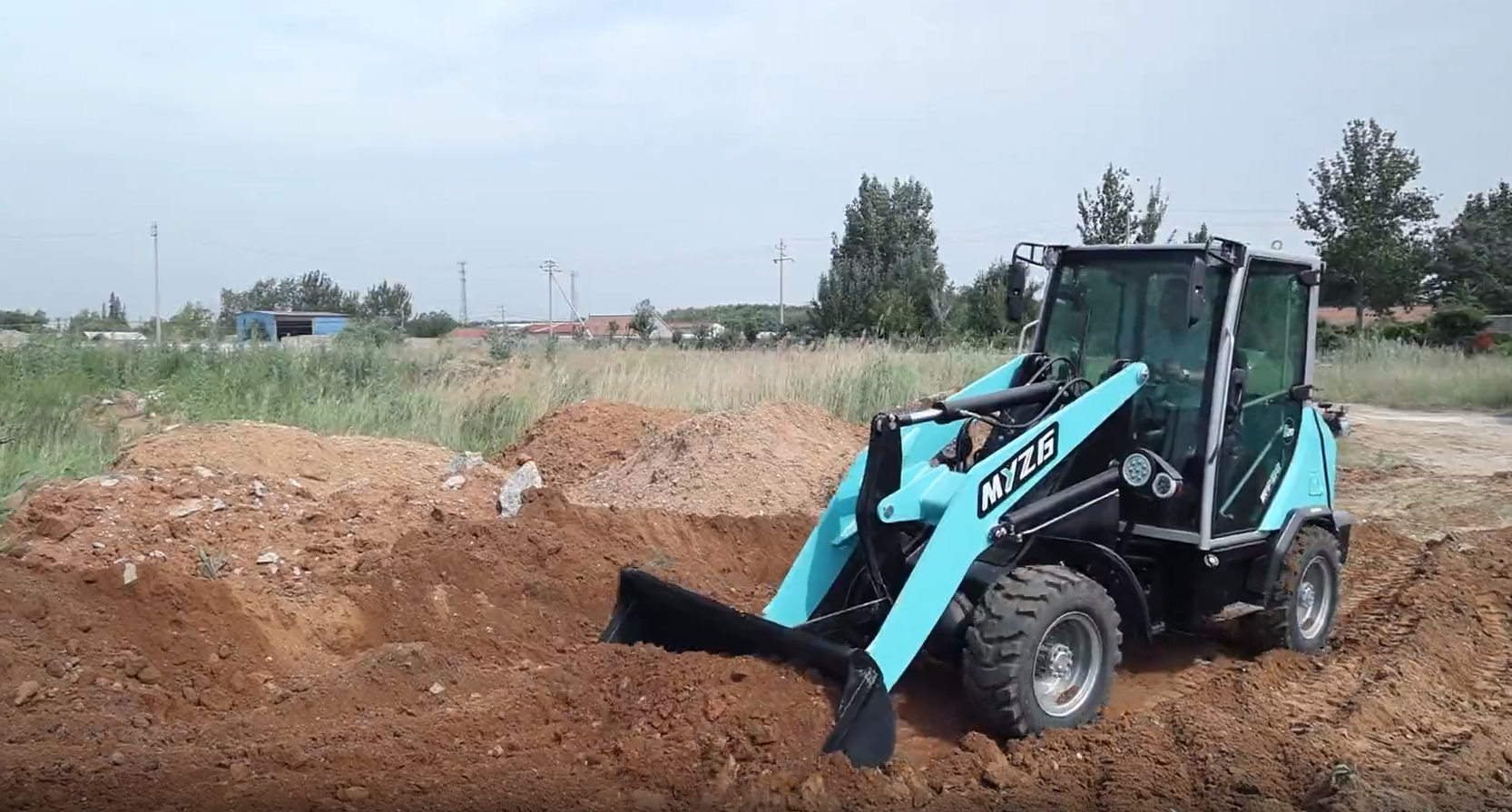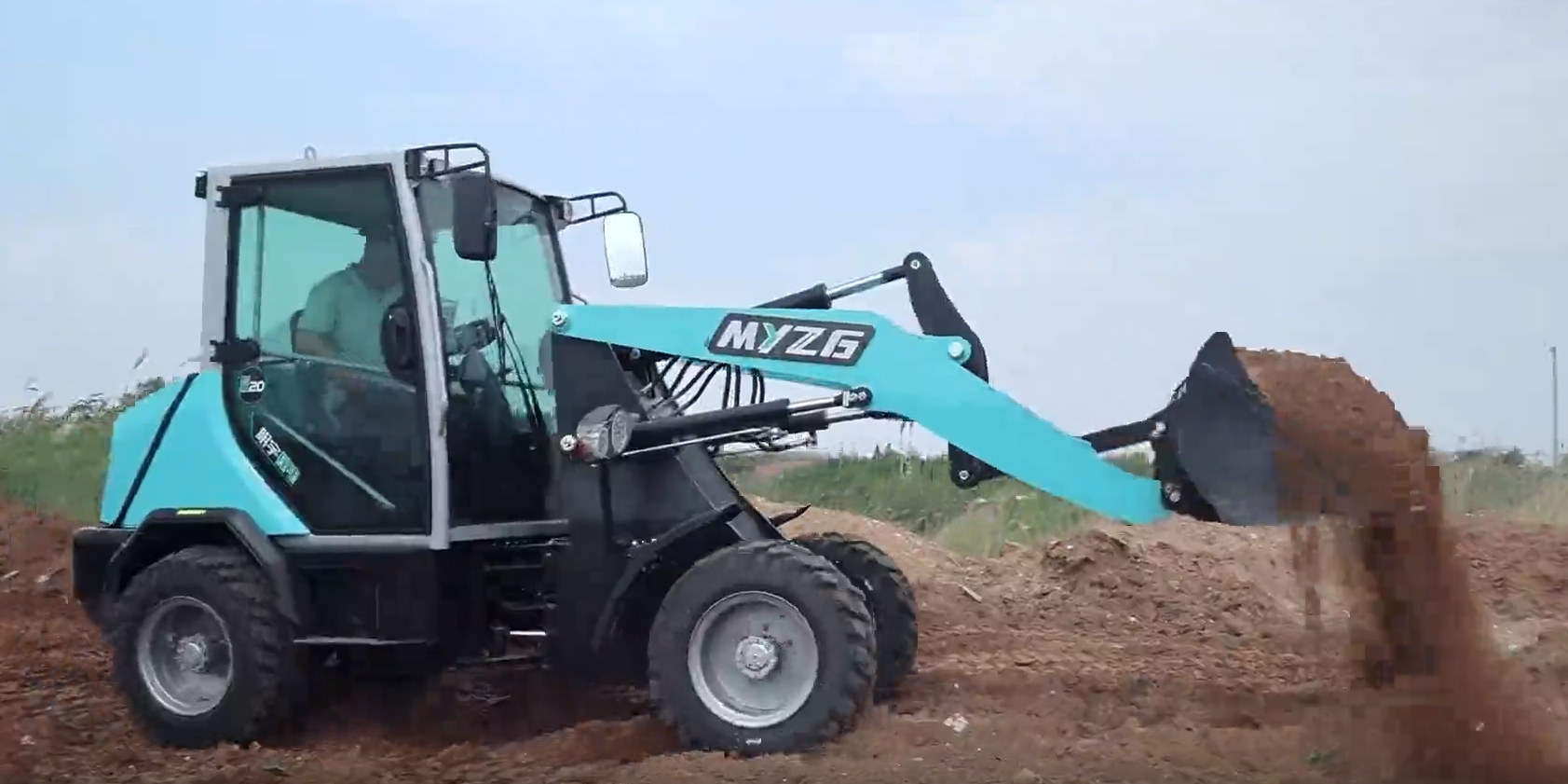I. Introduction
A wheel loader is a versatile construction equipment characterized by its large tires, powerful engine, and a large bucket mounted on a hinged arm. This robust machine is widely used in various industries, from construction and mining to agriculture and landscaping.

Historical Overview
The origins of wheel loaders can be traced back to the early 20th century, when agricultural tractors were modified to perform material handling tasks. As technology advanced, these early machines evolved into specialized equipment designed for construction and industrial applications.
Importance of Wheel Loaders
Wheel loaders have become indispensable tools in modern construction and industries due to their numerous advantages:
· Versatility: They can handle a wide range of materials, from loose soil to heavy rocks.
· Efficiency: Their powerful engines and hydraulic systems allow for rapid loading and unloading cycles.
· Maneuverability: Large tires and articulated steering provide excellent mobility on various terrains.
· Productivity: Wheel loaders significantly increase productivity and reduce labor costs.
In the following sections, we will delve deeper into the key components, operation, types, applications, safety considerations, and future trends of wheel loaders.
II. Key Components of a Wheel Loader
A wheel loader is composed of several key components that work together to perform its tasks efficiently:
1. Frame:
· Rigid Frame: This type of frame is a single, solid structure that provides excellent stability and durability.
· Articulated Frame: This design allows the front section of the machine to pivot, enhancing maneuverability in tight spaces.
2. Engine:
· Diesel Engines: The most common type, offering high power and torque for demanding applications.
· Electric Engines: Emerging technology, providing zero emissions and quieter operation.
3. Transmission:
· Hydrostatic Transmission: Offers smooth and stepless speed control, ideal for precise maneuvers.
· Mechanical Transmission: Provides direct power transfer, suitable for heavy-duty applications.
4. Hydraulic System:
· Pumps: Generate high-pressure hydraulic fluid.
· Valves: Control the flow and direction of hydraulic fluid.
· Cylinders: Convert hydraulic pressure into mechanical force to operate the loader's arms and bucket.
5. Bucket:
· General Purpose Buckets: Versatile for handling various materials.
· Rock Buckets: Designed for heavy-duty applications, such as mining and quarrying.
· High-Capacity Buckets: Ideal for large-scale material handling.
6. Tires:
· Pneumatic Tires: Offer good traction and shock absorption.
· Solid Tires: Provide excellent durability and puncture resistance.
In the next section, we will explore how these components work together to perform the loading cycle.
III. How a Wheel Loader Works

A wheel loader operates through a series of coordinated movements, primarily powered by its hydraulic system. Here's a breakdown of the loading cycle:
Digging and Loading:
o The operator lowers the loader arm and bucket to the ground.
o Hydraulic cylinders extend, forcing the bucket into the material.
o The bucket scoops up the material and is then raised by retracting the cylinders.
Dumping and Returning:
o The operator raises the loader arm and tilts the bucket backward.
o The material is discharged onto the desired location.
o The bucket is then lowered and returned to the ground position.
Hydraulic System Operation:
The hydraulic system is the backbone of a wheel loader's operation. It works on the principle of Pascal's law, which states that pressure applied to a confined fluid is transmitted equally in all directions.
1. Hydraulic Pump: This component draws hydraulic fluid from a reservoir and pressurizes it.
2. Hydraulic Valves: These valves control the flow and direction of the pressurized fluid to various hydraulic cylinders.
3. Hydraulic Cylinders: These cylinders convert the hydraulic pressure into mechanical force, powering the loader's arm, bucket, and other components.
By precisely controlling the flow of hydraulic fluid, the operator can manipulate the loader's movements to perform a variety of tasks efficiently.
IV. Types of Wheel Loaders
Wheel loaders come in various sizes and configurations to suit different applications. Here are the primary types:
Compact Wheel Loaders:
o Smaller and more maneuverable, ideal for confined spaces.
o Commonly used in landscaping, agriculture, and light construction.
Medium Wheel Loaders:
o Versatile machines suitable for a wide range of applications.
o Often used in construction, mining, and material handling.
Large Wheel Loaders:
o Powerful and high-capacity machines, designed for heavy-duty tasks.
o Commonly used in mining, quarrying, and large-scale construction projects.
The choice of wheel loader depends on factors such as the type of material to be handled, the working environment, and the required productivity.
V. Applications of Wheel Loaders
Wheel loaders are indispensable tools in a variety of industries. Here are some of their primary applications:
Construction Industry:
o Earthmoving and excavation
o Material handling (soil, gravel, debris)
o Loading and unloading trucks and rail cars
Mining Industry:
o Loading of ore and waste materials
o Overburden removal
o Stockpiling and reclaiming materials
Agriculture:
o Material handling (feed, grain, manure)
o Snow removal
o Loading and unloading agricultural equipment
Other Industries:
o Forestry: Logging and timber transport
o Landscaping: Grading, leveling, and material transport
o Recycling: Sorting and processing recyclable materials
The versatility and efficiency of wheel loaders make them essential for a wide range of tasks, contributing to increased productivity and reduced labor costs.
VI. Safety Considerations
Operating a wheel loader involves inherent risks. To ensure safe operation, it's crucial to adhere to the following safety guidelines:
Operator Training:
· Proper Training: Operators should undergo comprehensive training to understand the machine's controls, limitations, and potential hazards.
· Certification: Obtaining a certification can validate an operator's competence.
Machine Maintenance:
· Regular Inspections: Conduct daily pre-operational inspections to identify and address potential issues.
· Preventive Maintenance: Adhere to a regular maintenance schedule to keep the machine in optimal condition.
Worksite Safety:
· Hazard Identification: Identify and assess potential hazards, such as unstable ground, overhead power lines, and traffic.
· Safe Operating Practices: Follow safe operating procedures, including maintaining a safe distance from the edge of slopes and avoiding overloading the machine.
· Personal Protective Equipment (PPE): Wear appropriate PPE, such as hard hats, safety glasses, and steel-toed boots.
By prioritizing safety, operators and employers can significantly reduce the risk of accidents and injuries associated with wheel loader operation.
VII. Future Trends in Wheel Loader Technology
The future of wheel loader technology is promising, with several emerging trends poised to revolutionize the industry:
1. Automation and Autonomous Operation:
· Autonomous Systems: Development of autonomous wheel loaders capable of operating without human intervention.
· Remote Control: Increased use of remote control technology for enhanced safety and efficiency.
2. Electric Power:
· Battery-Powered Wheel Loaders: Adoption of electric power to reduce emissions and operating costs.
· Fuel Cell Technology: Exploration of fuel cell technology for longer operating ranges and reduced emissions.
3. Advanced Telematics:
· Real-Time Monitoring: Implementation of telematics systems to monitor machine performance, fuel consumption, and operator behavior.
· Predictive Maintenance: Use of data analytics to predict potential failures and schedule maintenance proactively.
4. Enhanced Operator Comfort and Safety:
· Ergonomic Cab Designs: Improved cab designs to reduce operator fatigue and enhance comfort.
· Advanced Safety Systems: Integration of advanced safety features, such as collision avoidance systems and automatic braking.
By embracing these technological advancements, the wheel loader industry can continue to improve efficiency, productivity, and sustainability.
VIII Summarize
Wheel loaders have become indispensable tools in various industries, revolutionizing material handling and construction processes. Their versatility, power, and efficiency have significantly contributed to increased productivity and reduced labor costs.
As technology continues to advance, we can expect to see further innovations in wheel loader design and operation. From autonomous systems to electric power, the future of wheel loaders is bright, promising a more sustainable and efficient future for the construction industry.
By understanding the key components, operation, types, applications, and safety considerations of wheel loaders, we can harness their full potential and contribute to the growth and development of our communities.
Post time:Nov.04.2024
